FabFungus is a physical installation inspired by questions of digital life and cellular growth. It was created together with Marek Straszak and Arek Zub, and exhibited for the first time at Posthuman_Data exhibition in Poznań in 2019.
FabFungus is a computational tool for creating digital structures grown out with a simulated process. It is also a manifestation of couple of these forms, brought to physical reality through imperfect 3D printing.
FabFungus (...) is a technologically advanced work annexing the theoretical perspective of medianatures and their potential adaptations in the digital-biological environment. In this design, data is part of a new nature, its physical representation is just one of the possible biological interpretations of the code. We are talking here about redefining what is alive and inanimate, artificial and natural. The work raises the question: how much closer to "nature" and biological definitions are algorithms and "non-human" programming languages than anthropocentric strategies for creating cultural narratives and myths?
— Agnieszka Jelewska, Michał Krawczak
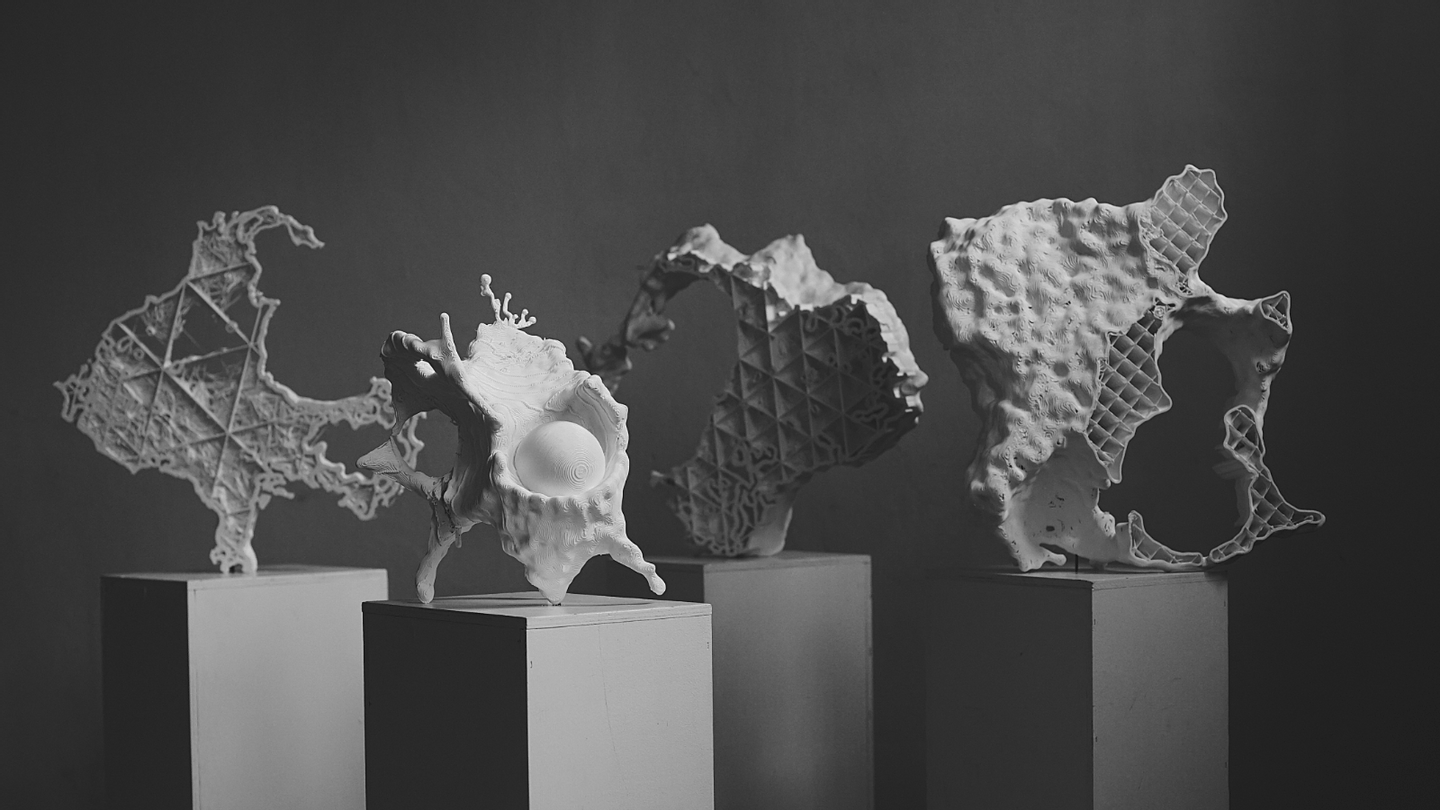
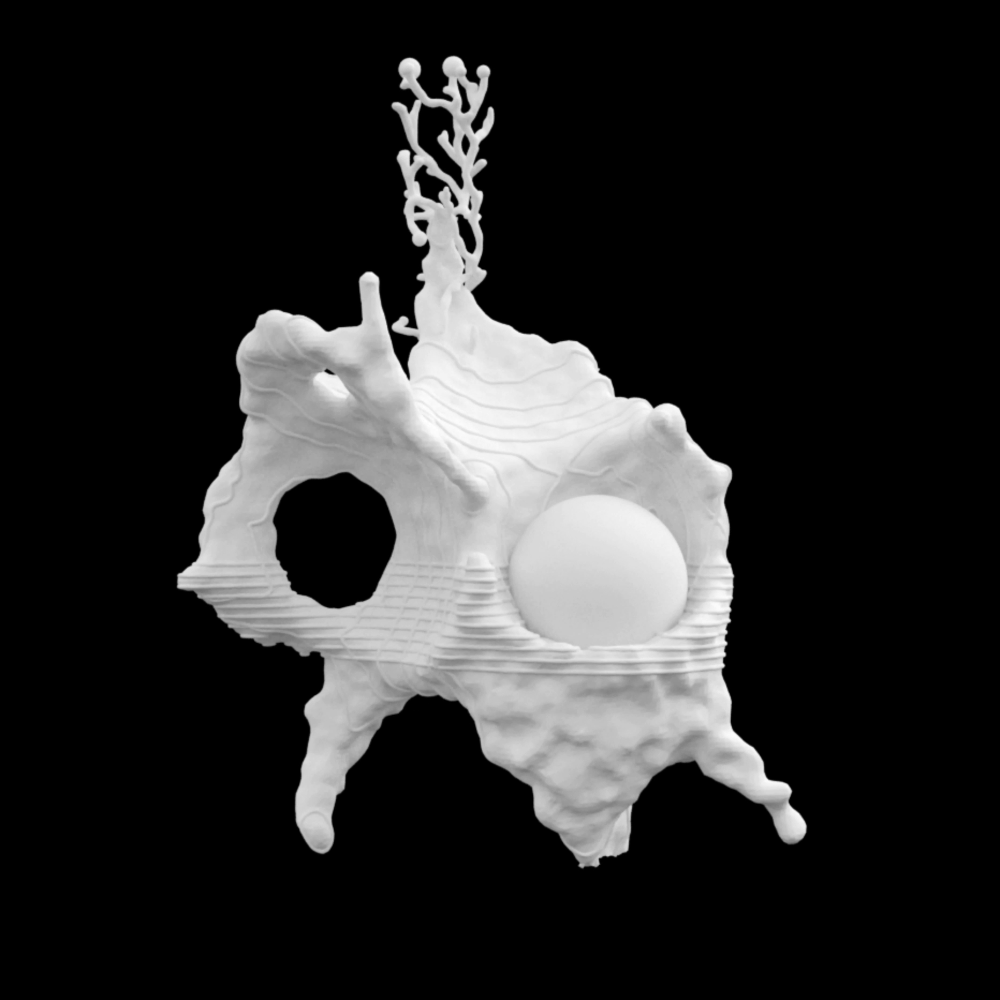
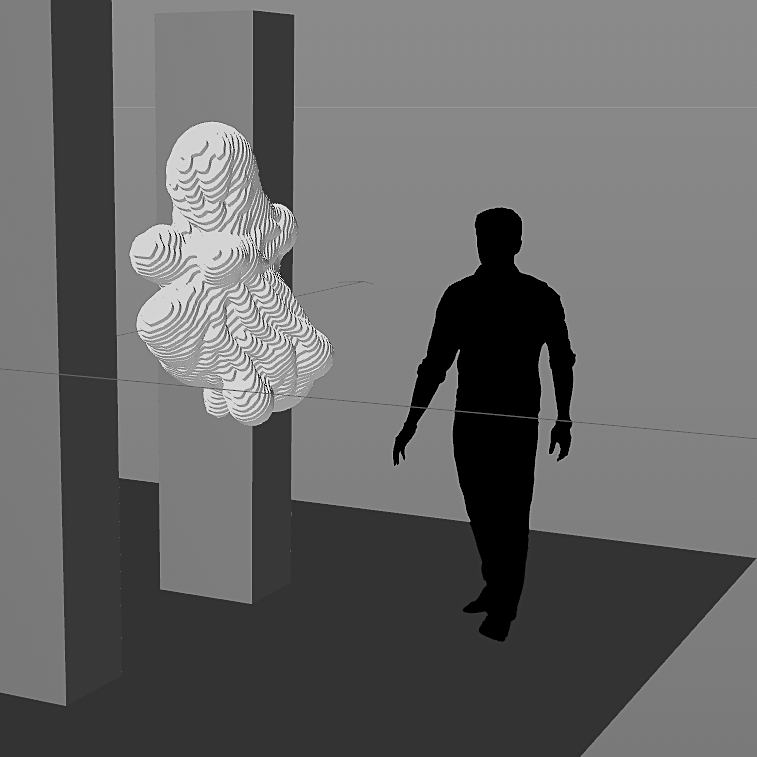
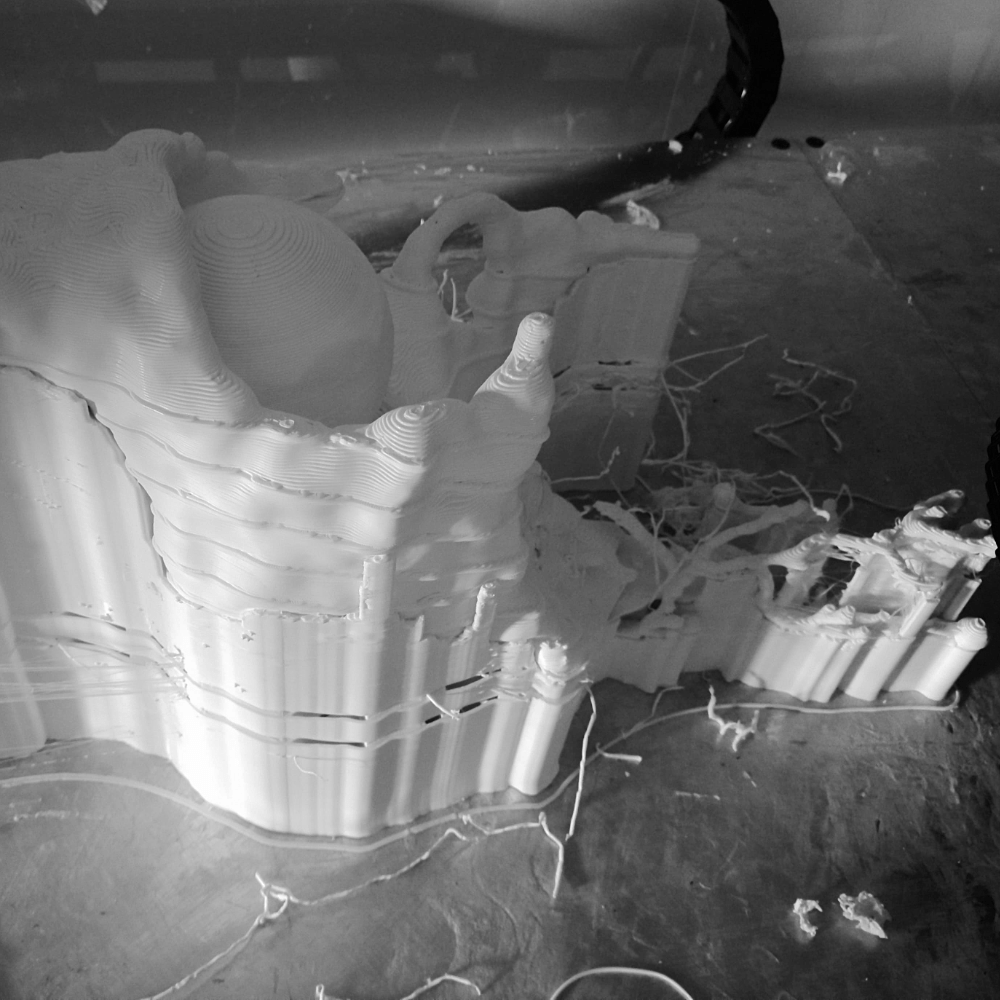
From technical side, FabFungus was a culmination of three personal research projects:
- questions about SDF modeling answered with
hiccup-sdf - high-performance simulation algorithms, still partly unpublished:
behaviours-rs - experiments in creating a medium for quick exploratory work: Protoboard
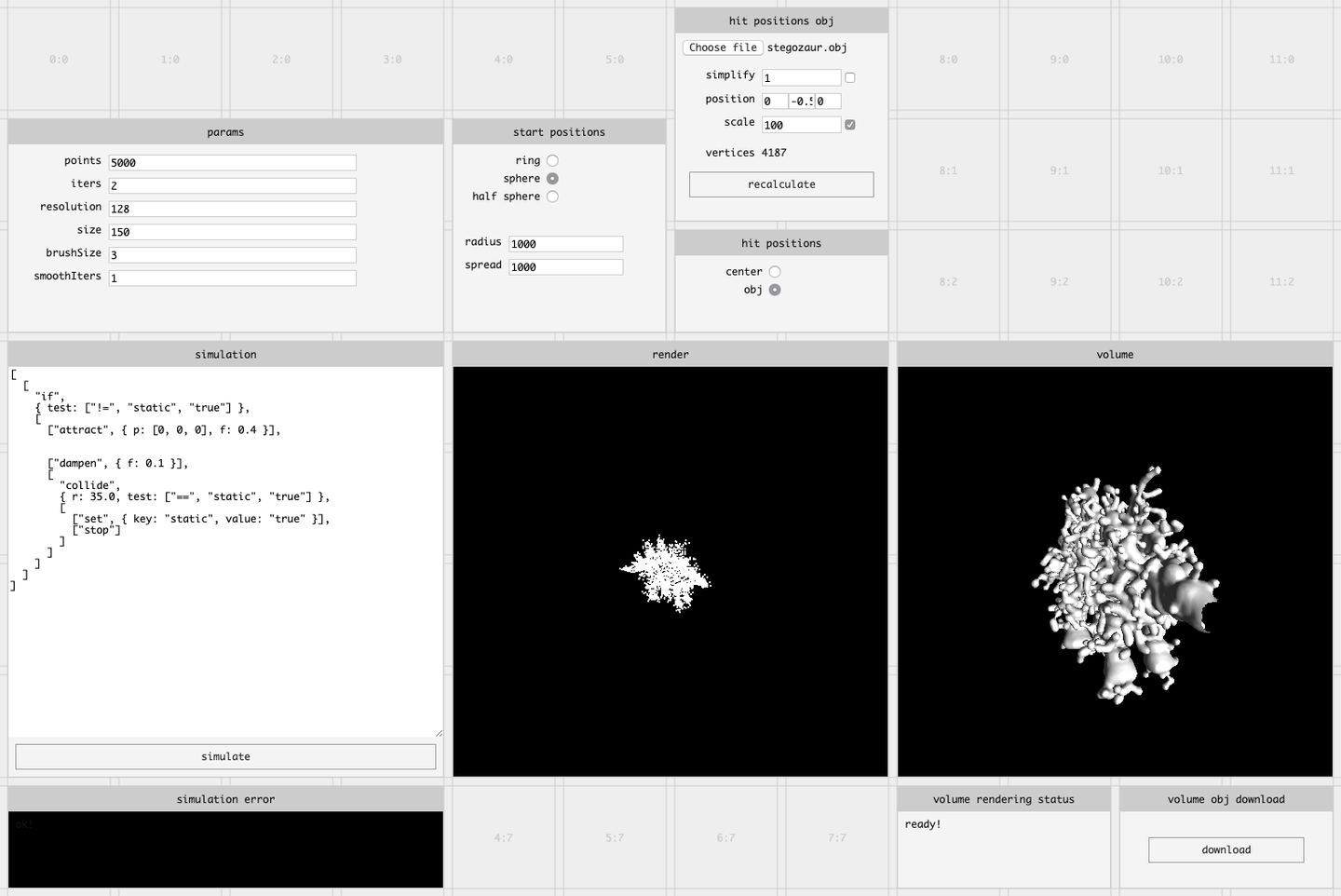
In 2020 FabFungus was a part of Best of Poland section at Digital Cultures, you can see me talking about it below:
- FabFungus — yet another 2019 project finally documented in 2020 — an artwork exploring cellular growth and questions of artificial life; selected in the Best Of Poland section at Digital Cultures festival this year (here's me presenting the work)
The code-based approach is great for parametric designs or art projects (like FabFungus), while SolveSpace is awesome for quick sketches. In this project I had to figure out how to combine multiple parts together, and there was just no way around trying a serious tool — I went with Fusion 360 just because I had heard about it previously.